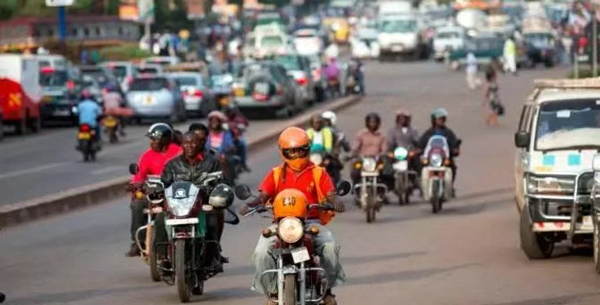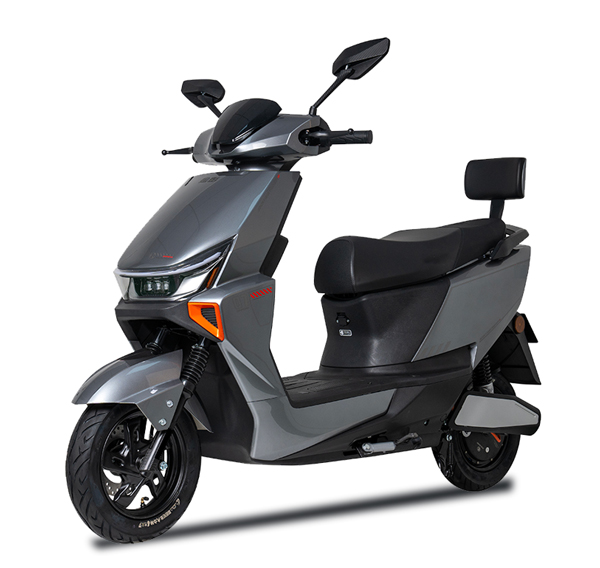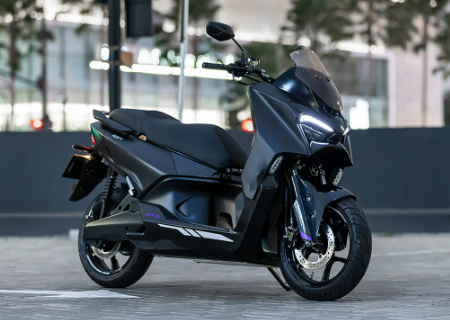WONACH SUCHST DU?
Globaler potenzieller Markt für Zweiräder und Elektrifizierungsmöglichkeiten in Entwicklungsländern
Aug 13, 2025Globaler potenzieller Markt für Zweiräder und Elektrifizierungsmöglichkeiten in Entwicklungsländern

Die weltweite potenzielle Nutzerbasis für Zweiräder wird auf 2 bis 2,5 Milliarden Menschen geschätzt, was etwa einem Drittel der Weltbevölkerung entspricht. Die Verbreitung elektrischer Zweiräder in Entwicklungsländern bietet eine neue Geschäftsmöglichkeit.
Kürzlich machte ein chinesisches Unternehmen auf sich aufmerksam, indem es ausländische Führungskräfte für seine Mobilitätssparte und einen Produktmanager für Elektromotorräder besetzte. Insidern zufolge befindet sich das intern entwickelte Projekt für Elektro-Zweiräder seit fast drei Jahren in der Entwicklung und konzentriert sich auf Märkte in Afrika und Südasien.
Vor dem Hintergrund der globalen Elektrifizierungswelle haben sich Zweiräder in Entwicklungsländern zum gängigen Verkehrsmittel entwickelt. In Südasien und Südostasien beispielsweise wird die Entwicklung elektrischer Zweiräder schon seit langem vorangetrieben, und es herrscht ein starker Wettbewerb. Branchenkonsens ist sich einig, dass die Elektrifizierung von Zweirädern in Entwicklungsländern Unternehmen entlang der Lieferkette neue Möglichkeiten für die Expansion ins Ausland eröffnet.
Die Markteinführungen einiger Unternehmen haben die Chancen für elektrische Zweiräder in Afrika auf sich aufmerksam gemacht. Für den afrikanischen Markt ist die Bedeutung von Zweirädern vergleichbar mit der Verbreitung von Smartphones: hohe Nachfrage, geringe Durchdringung und der Beginn eines Blue-Ocean-Marktes. In einigen afrikanischen Ländern drückt die politische Unterstützung den „Startknopf“ für die Elektrifizierung.
Ende 2024 kündigte die ruandische Regierung an, dass ab 2025 in ihrer Hauptstadt Kigali die Zulassung neuer benzinbetriebener Motorräder verboten sein werde. Alle neu zugelassenen Fahrzeuge müssten dann Elektromotorräder sein. Das Land plant außerdem den Bau von über 200 Ladestationen (alle 50 Kilometer eine) und hat einen landesweiten Förderplan ausgearbeitet, der unter anderem Steuersubventionen umfasst, um private Unternehmen zu ermutigen, sich an der lokalen Produktion kompletter Fahrzeuge, Antriebssysteme und Ladegeräte zu beteiligen.
Ruanda ist damit nicht allein. Kenia kündigte 2023 eine Partnerschaft mit einem lokalen Elektroauto-Startup an, um den Verkauf von 1,2 Millionen Elektromotorrädern zu fördern und mehr als 3.000 Batteriewechsel- und Ladestationen einzurichten. Auch Uganda treibt seinen Plan zur Elektrifizierung von Motorrädern voran und bietet doppelte Subventionen für Fahrzeugkauf und Batteriewechsel.
In vielen politischen Dokumenten der Regierung werden Elektromotorräder eindeutig als Schlüsselfaktor für die Emissionsreduzierung und die Energiewende im Verkehrssektor bezeichnet und als vorrangiges Projekt für die Entwicklung einer sauberen Verkehrsinfrastruktur aufgeführt.

Während sich Europa und die USA auf intelligente vierrädrige Elektrofahrzeuge konzentrieren, haben Zweiräder in Entwicklungsregionen wie Afrika, Südasien und Südostasien Autos als wichtigstes Verkehrsmittel der Elektrifizierung überholt. Dies ist das Ergebnis mehrerer Faktoren:
Vor den afrikanischen Ländern erlebten auch die Zweiradmärkte in Südasien und Südostasien dank starker politischer Unterstützung einen Aufschwung.
lIndiens Subventionspolitik für elektrische Zweiräder führte im Jahr 2023 zu einem Absatzanstieg von 33,5 % im Vergleich zum Vorjahr und erreichte 857.000 Einheiten.
lIndonesien plant, bis 2025 1,8 Millionen Benzinmotorräder zu ersetzen.
lVietnam hat durch Steueranreize und spezielle Fahrspurplanung mit 8,5 % die höchste Durchdringungsrate von Elektrozweirädern in Südostasien erreicht.
Afrika befindet sich derzeit in einer Phase des Infrastrukturwachstums. Zwar ist das Land technologisch und politisch noch nicht so weit entwickelt wie Südostasien, bietet aber mehr Möglichkeiten, von Null auf Eins zu kommen.

In weniger entwickelten Regionen sind Zweiräder nicht nur Konsumgüter, sondern auch wichtige Produktionsmittel.
In Afrika südlich der Sahara wuchs die Motorradflotte von 5 Millionen im Jahr 2010 auf 27 Millionen im Jahr 2022, wobei über 80 % für den gewerblichen Transport genutzt werden – etwa für Motorradtaxis, Logistik und Shuttles zwischen ländlichen und städtischen Gebieten.
Professionelle Radfahrer legen in der Regel mehr als 50 km pro Tag zurück, wobei die Kraftstoffkosten 30–40 % ihres Einkommens ausmachen. Durch die Elektrifizierung können die Gesamtkosten über die gesamte Lebensdauer um mehr als 50 % gesenkt werden.
In manchen Teilen Afrikas liegt die Netzabdeckung unter 20 %, und in Bangladesch dauern die täglichen Stromausfälle zwei bis vier Stunden. Im Vergleich zu Vierrädern eignen sich Zweiräder besser für schwieriges Gelände und Gebiete mit eingeschränktem Zugang zu Elektrizität.
lAfrika: Hohe Temperaturen und Staub erfordern Batterien mit ausgezeichneter thermischer Stabilität, Abdichtung und Staubschutz.
lSüdostasien: Hohe Luftfeuchtigkeit, lange Regenzeiten und schwierige Straßenverhältnisse erfordern wasserfeste, stoßfeste und langlebige Batterien.
In Gebieten mit instabiler oder eingeschränkter Netzabdeckung muss ein Gleichgewicht zwischen Kosteneffizienz und Anpassungsfähigkeit gefunden werden, beispielsweise durch Hybridbatterielösungen oder die Kompatibilität mit Niedrigleistungsladestationen. Das Batteriewechselmodell ist hier von großem Vorteil – manche Betreiber können mit nur wenigen Wechselstationen Tausende von Fahrgästen bedienen.
Für intensive Nutzung sind Akkus mit Schnellladefunktion, langer Lebensdauer und hoher Leistungsabgabe erforderlich. Beispiele hierfür sind Akkus, die in 20 Minuten zu 80 % aufgeladen werden können, oder leichte Module mit hoher Entladeleistung, die die Betriebseffizienz deutlich verbessern.
Durch den Bau lokaler Produktionsanlagen können Zölle und Logistikkosten gesenkt, Lieferketten verkürzt und die Reaktionsfähigkeit auf den Markt verbessert werden.
Ein gut etabliertes Offline-Kundendienstnetz ist für den Erfolg in Entwicklungsmärkten von entscheidender Bedeutung, da für die Benutzer eine einfache und zeitnahe Wartung und ein schneller Austausch der Batterien oberste Priorität haben.
Durch den Aufbau integrierter F&E-, Produktions-, Vertriebs- und Betriebsnetzwerke in mehreren Ländern können Unternehmen den Anteil ihrer Auslandseinnahmen erhöhen und die Widerstandsfähigkeit ihrer Lieferkette stärken.